We really enjoyed our trip to Japan. But when we were planning the trip there were lots of things to know that would have saved us lots of stress. I like to be prepared especially when travelling with our kids. This post is about all the things we discovered while we were that no one talks about. If you are like me hopefully knowing theses things about Japan before you go will make your trip more enjoyable.
Table of Contents
1. Not speaking Japanese won’t be an issue.
One of our main worries was that we didn’t know very much Japanese so how would we get around, be understood and get food to suit my limited diet. We had a Japanese phrasebook and google translate but in reality, there wasn’t a lot of need for it.
All the trains and stations had English as well as Japanese signage and announcements. Most restaurants had some sort of English menu option, although the translation sometimes took a little bit of interpreting. There were English speakers in the most surprising of places. ( playing by the river in Gujo Hachiman an English speaker came up to us to have a chat and showed us some secret places to visit.)
Pretty much every accommodation had English speakers available at reception and the Ryokan in Gujo Hachiman they knew enough English to say “Japanese style breakfast ok?”
Tools to help
Yes, we did have a few guesses now and then and the phrasebook was useful to ask for “Mizu” (water) with our meals and say “that was delicious” (oy shi kat ta) Google translate was useful when I had to find eyedrops in a pharmacy but otherwise we could work things out from photos and English translations. I am not saying we didn’t try to use Japanese and that the apps and phrasebook weren’t useful, just that it wasn’t as hard to communicate as I had feared.
I had got the impression from previous travellers that communicating was difficult. Whether things had improved with preparation for the 2020 Olympics, I don’t know, but not being able to speak Japanese is not something to worry about when preparing for your trip.
2. Bic Camera is your best friend in Japan
If you have any electronic worries Bic camera is the place to go. On day 1 we realised that the sim card we had purchased in Australia for data wasn’t going to fit my phone. We really wanted to both have data so we could communicate and use google maps for directions. With a bit of pointing and a few enquiries, we found out that BIC camera was the place to go.
Walking in there I found heaps of options for Data sim cards and refills. The only downside compared to our pre-purchased one (https://www.simcorner.com/japan-prepaid-sim.html) was that Facebook and Google maps were counted towards the total so I did have to top up towards the end of our trip.
On our way to Hiroshima ( luckily after I got my photos of Mt Fuji), the battery in my camera went flat. The adapter I had brought from Australia to charge it had not fitted in most hotel plugs so I needed an adapter and fast.
Enter Bic Camera again. Right across from Hiroshima station was another Multistory BIC camera with at least 5 options for the adapter I needed as well as many different options for around the world. Once that crisis was averted we had time to appreciate all the Bic camera could offer. So much to look at puzzles, toys, lego, models, video games, cameras even a pharmacy. Plenty to keep the kids and adults amused especially on a wet day.
3. 7-Eleven has everything you need
Before I left people told me that 7-Eleven was useful. That was where to find Atm’s that would accept overseas cards, essential for the cash society that is Japan. But thinking about 7 -Eleven Australia I didn’t realise how often we would be there.
They are so much more than a place to get cash out. On Day 1 it was great for some free WIFI to message a friend we were due to meet.
It is a great source of snacks. Sushi triangles and Edamame beans were almost daily snacks and at only a few dollars each, we were happy to visit 7-Eleven regularly. There was some average hot food if you were desperate but depending on the size of the 7-Eleven you could get Eki Ben ( pre-packed lunches) for the train journeys, Souvenirs, breakfast cereal and even socks and underwear if it was a bit long between washes ( well at least for the men)
Family mart also had suitable ATM’s but the snacks were not as good as 7-Eleven. NewDay and Lawson don’t have the correct Atm’s. We learnt the hard way when we had no cash to top up our Pasmo cards at Maihama station to get home from Disneyland.
4. If you keep walking down the station there will probably be a lift or Escalator
Last year travelling around London we found out that lots of the stations had stairs you had to carry your bags up. This was hard work and so this time we brought fewer bags as we expected the worst.
A couple of times we carried our bags upstairs only to find a bit further down the platform there was a lift or escalator or both. This was a lifesaver when the kids were refusing to pull their weight and we had extra to carry.
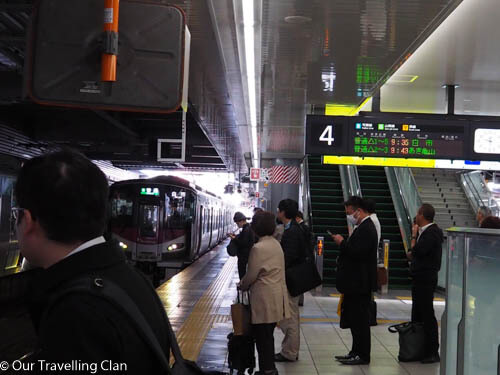
Occasionally there was a little bit of a wait for the lift but usually, we were able to pull to the side of the escalator even in the crowds and get where we needed to go with the least amount of effort. This was unexpected as we rarely saw Japanese people with very much luggage.
The only exception to this rule was at Gujo Hachiman station as that was very rural and the only way off the platform was on a rickety wooden staircase. Luckily we weren’t in a hurry by the time we got there.
5. Get on the back of the bus
Catching the bus was not something we do much at home but when we have travelled in the past we always expect to show the driver the ticket/ pass as you get on the bus.
Here we noticed that everyone will get on the bus from the back doors. If you don’t have a pass you would collect a ticket from the machine there or tap your IC card.
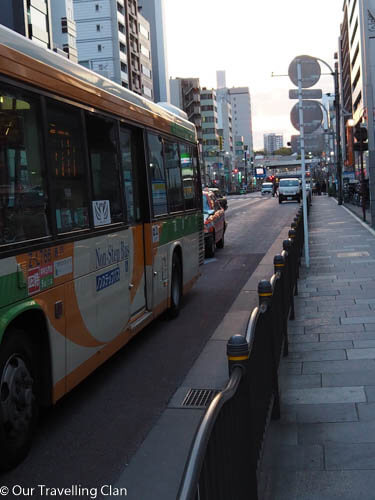
When you reach your stop we were able to show our passes ( JR rail passes were accepted on some of the bus routes around Japan) or would show the driver the ticket and pay the amount required for the sectors you had travelled. Or lastly, just tap your IC card again at the front.
6. Pasmo/ IC cards can be used nearly everywhere in Japan
When we arrived in Japan we wanted to get an IC card so we could use it on the trains. Anyone who has been to London and used an Oyster card or any other cities with train systems will probably be familiar with the concept. You buy a travel card and add credit to it and then tap on an off the train for your journeys. When the balance becomes low you need to top it up again.
Where Japan differs from some other countries is that you need cash to buy the cards. Luckily the machines for getting the cards have an English option both to buy them and top up your card.
There was apparently an option to get a child’s card so you could be charged child fares instead of adult fares. We could not find this option on the machines and when we googled it appears that you need to have these card registered. The station we were getting our cards at was not one of the major ones so we didn’t go to an office to discuss further.
The advantage Japan has with its IC cards is the variety available and that you can use them in more places than just Tokyo trains.
There is the Suica card with the cute penguin on it and Pasmo ( which is pink and grey) which we purchased from the machine in the station. This allowed us to tap on and off all the metro and JR lines in Tokyo but we also found we could use it on trains and buses in Hiroshima, Osaka, Kyoto, Kanazawa and even saw signs in Matsumoto. IC cards can also be used for purchases in some places and vending machines. Each city has its own variation available but Pasmo and Suica seemed to be accepted in most cities we visited.
7. Plastic is everywhere except for payments
We try to be environmentally conscious wherever we can. I have even written a blog post about it. We take our own straws and carry bags with us. We even bought chopsticks as a souvenir so we wouldn’t have to keep using the disposable ones which we know are not great for the environment.
What we weren’t prepared for was the amount of plastic everywhere. In supermarkets, everything was packaged in plastic. If you bought takeaway food from them it would be packaged in plastic, then they would put it in another plastic bag before packing in the main bags, and if we weren’t fast enough they would throw in plastic cutlery and plastic-packaged serviettes. I know they were trying to be helpful but we were drowning in plastic. In most places, there were no facilities to recycle all the packaging so it felt like such a waste.
In every shop, they gave you plastic bags for even the smallest purchases. I would be rushing to get my shopping bags out before they packed everything for me in their plastic bags. I even used google translate to work out how to say no bag, please. ( it is …. Nobaggu shite kudasai, By the way) I still wasn’t fast enough most of the time but if I waved my reusable bags they would let me use them.
One shop our girls bought a badge and the person behind the counter put each badge in a separate shopping bag. I made the girls put them on and return the plastic bags.
Disneyland the worst offender
At Disneyland, if you bought something from the shop, not only did they put it in a bag for you but they put extra plastic bags in it for you. I couldn’t work out why, unless in Japan the bag from certain places is a status symbol?
Speaking of Disneyland, this seemed to almost the only place in Japan where you didn’t need cash and could pay for everything with plastic. In fact, the atm’s didn’t accept overseas cards so unless you had prepared before you arrived you had to pay for everything on the card.
In Australia, at the moment we are trying so hard not to use single-use plastic bags and supermarkets are charging you to use bags to discourage you. It surprised me that a country that has a reputation of being an “advanced” country and is one of the highest users of renewable energy still uses so much packaging on everything.
8. You need to carry your rubbish with you
This was another thing I wasn’t expecting. Most of Japan hasn’t got rubbish bins around. I believe this is due to the sarin attack in Tokyo in 1995. The bins were removed and replaced with clear containers at stations.
However, even on the street, it is rare you will come across any rubbish bins. There was some in Ueno park which actually separated into all sorts of rubbish options but they looked like they were a temporary fixture in place for cherry blossom season.
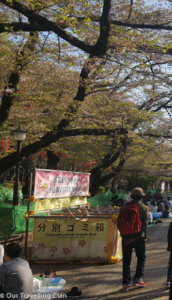
Despite the lack of bins there is not rubbish all over as people just take their rubbish with them. Also as people in Japan don’t eat and walk it is likely that they have given the rubbish back to the place they purchased the food.
This is a time that some of the plastic bags you are given come in useful although the supply was far in excess to our needs.
9. You don’t have to get the monorail from the airport
Most of the information I read about getting from Tokyo Haneda airport to the city talked about using the Monorail and when we got off the plane from Sydney that is what we did. We went straight towards those signs purchased tickets and headed to town.
We did notice the JR office but it was very full at the time so we didn’t go in to validate our JR passes. If we did we may have turned the other way and noticed that there is actually the JR Keikyo line that takes you straight to Shibuya. So depending on where you want to go this may be a good option for you.
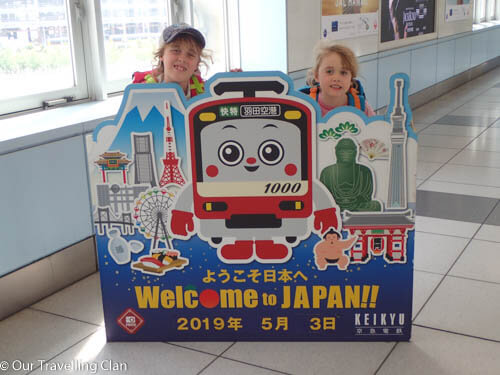
Another thing we could have done was actually get a 3 week rather than 2 week JR pass and travel around Tokyo using JR lines rather than our PASMO cards so much. There are many JR lines in Tokyo itself including the Yamanote circle line. If we had extended our JR rail pass it may have saved us having to top up the cards so often and potentially saved us money in the long run. The reason we missed this as not all JR lines are included on all the Tokyo subway maps. The Tokyo Subway map is initially very overwhelming so I can understand why it was not included but if we had found the JR lines earlier it would have given us more options.
10. Not all toilets in Japan are high tech.
Everyone talks about the high tech toilets in Japan. They play music, are heated, have tons of wash options and are often a highlight of visits to Japan. Based on what I had heard I was very surprised to find that actually, they are not everywhere. In fact, at some public toilets ( in stations, at Osaka castle and even at the airport) there are squat toilets. I was able to navigate these ok after travelling to Thailand but the kids were a bit shocked by the idea and struggled to use them.
Just so you know the signage for the “Japanese style” toilets looks like a slipper ( well that’s what I thought). Often this would be the symbol on the door and the “western-style” toilets had a symbol looking more like a toilet.
Sometimes they would be included with some “western-style” toilets but often even the Japanese people would be avoiding the squat toilets. Miss 8 was very reluctant to use squat toilets the first few times we came across them. On one of our train rides, the toilet in our carriage was a squat toilet and with some assistance, the girls were able to use it on the moving train. I guess if you really have to go you have to go.
We had a great time in Japan and lots of the things I was worried about before we left were due to the unknown. If you are like me and want to know as much as possible before you go I hope this has helped you.
If you have been to Japan already was there anything that you were surprised about? I would love to hear about your experiences.

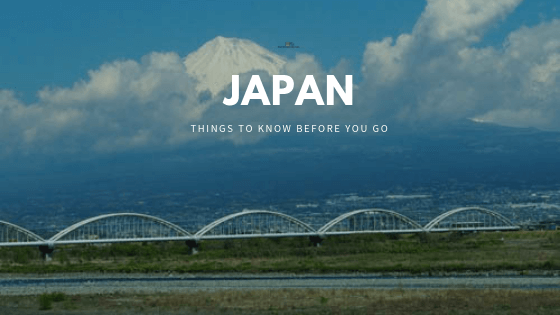
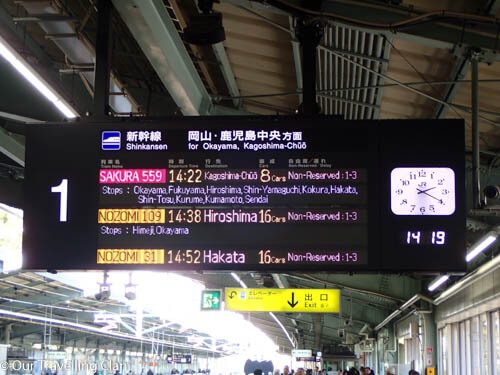
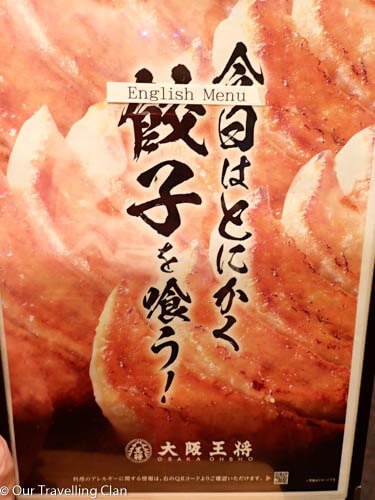
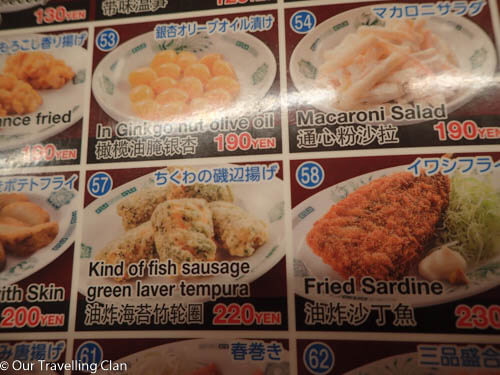
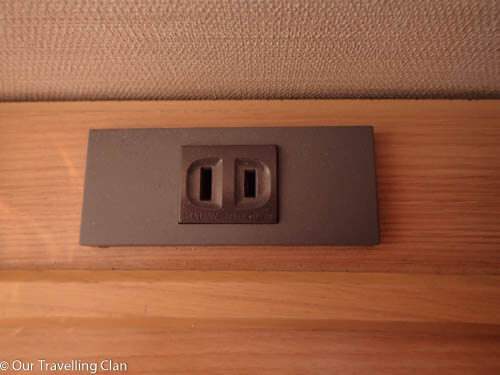
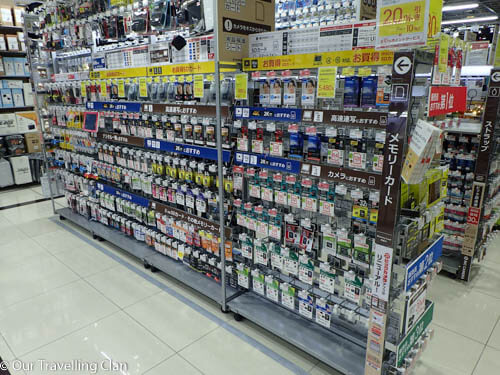
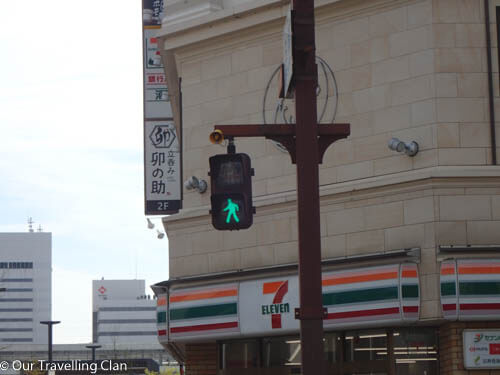
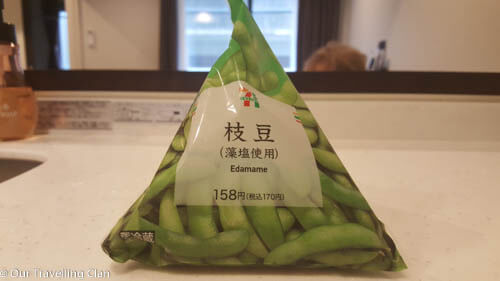
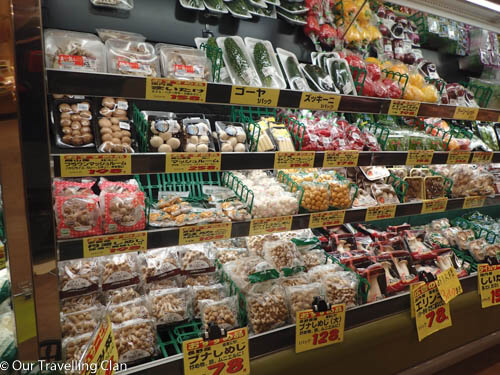
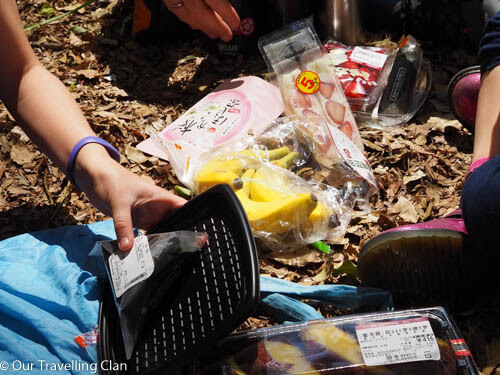
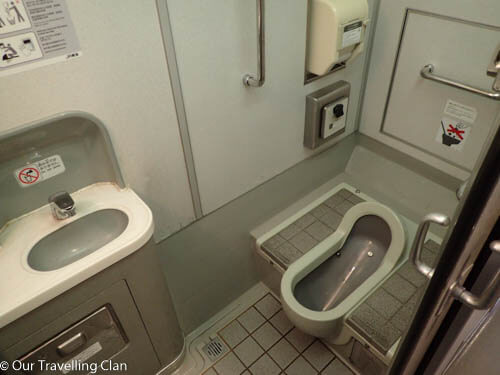

Good article Katie.
All very correct as we found it, especially about the English speakers in most areas. By no means everyone, but one could certainly find someone within a short space of time, especially if we were looking confused. Also, Google maps would tell you exactly which train to catch from which station, where to transfer, how many stops and how far we had to walk.
Hi Andrew,
thanks for taking the time to comment. Glad it matched your experience as well. Great tip about Google maps. It definitely gave you the correct information regarding trains and platforms. We also used Hyperdia.com to determine the best train routes.
You could pretty much tell you had the correct train because it was at the station on time and the platform it was supposed to be on.
We got the Icoca card in Kyoto. Exactly the same as pasmo and suico. Can be used just about everywhere except for, as we found, Nagasaki. But Nagasaki had an all day tourist travel pass for 500 yen which was handy. As far as getting the kids card, I spent 10 minutes trying to get it from a machine. I pushed the help button, a flap opened, a head poked out and told me to go into the JR office. You need to show the kid’s passport and the card is stamped with an expiry date.
As far as rubbish bins go… convenience stores. They are just about everywhere anyway. My fave is Lawson followed by 7/11. On previous trips it was Family Mart but 7/11 and Lawson are better these days. A few years ago the only atms you could use were at 7/11 and Post Offices and the rare Citibank atm. Now as you mentioned Family Mart and some Lawsons.
Love your tips 🙂
Hi Shane.
thanks for taking the time to comment. That is great to hear about the kid’s fares. Will keep it in mind for next time. Glad you liked the tips.